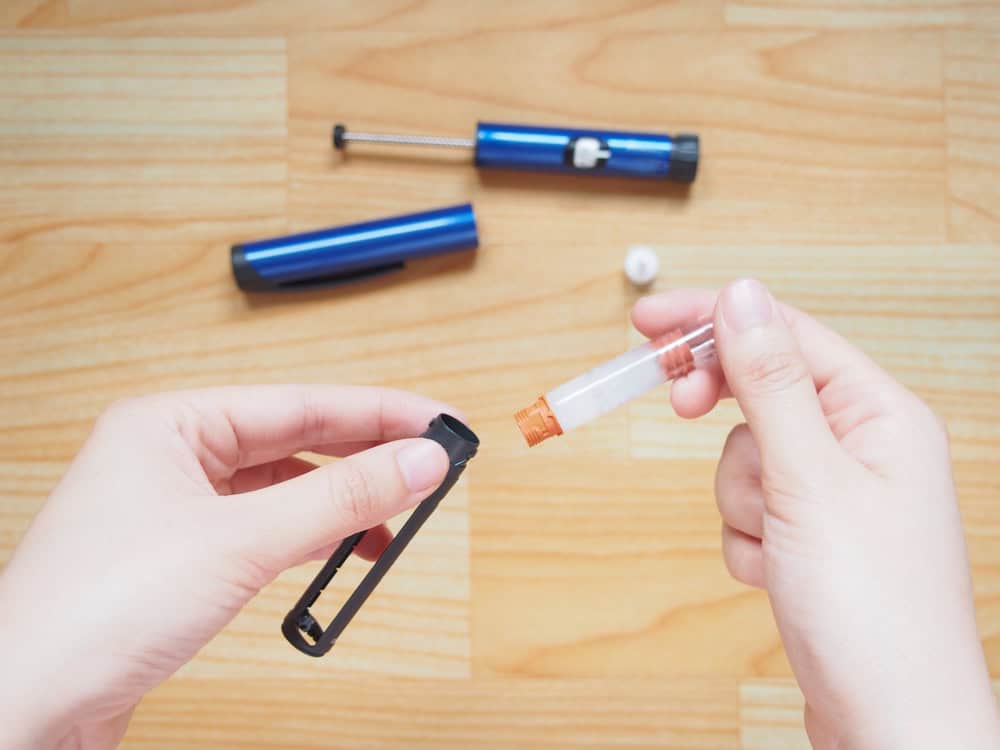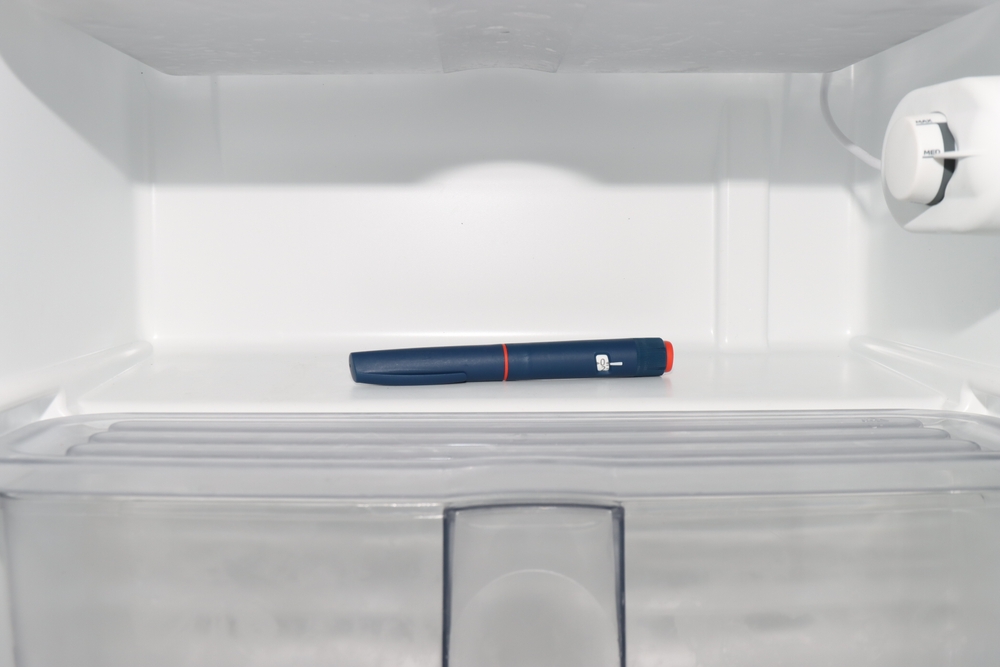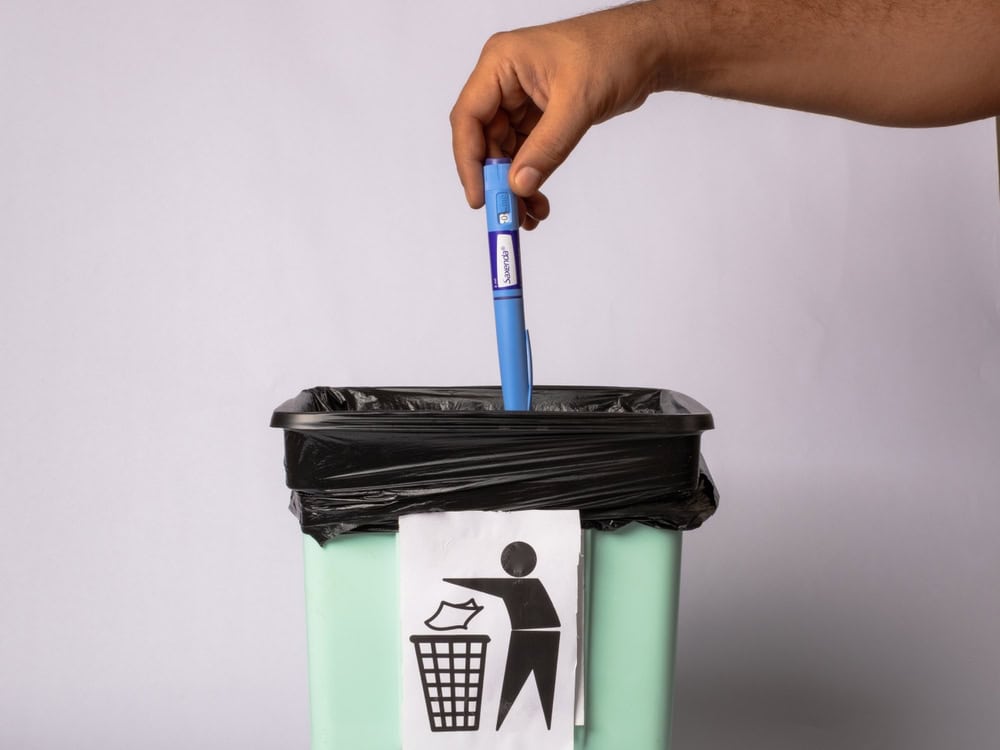
For many people living with diabetes, managing the condition has become a part of their daily lives and can be overwhelming. From planning meals and counting carbs to checking blood sugar and remembering medications, diabetes care can feel like a full-time job.
According to the International Diabetes Federation, by 2030, approximately 643 million adults could be affected by diabetes[1]. With diabetes on the rise, there’s an increase in demand for effective ways of management.
Amidst this, insulin pens are gaining popularity as a convenient and user-friendly medical device that can help many manage this chronic condition.
Explore seamless insulin management with a range of our latest diabetes devices!
Check it out here!
What are Insulin Pens?

Insulin pens are pre-filled or refillable medical devices that allow you to inject insulin with minimal effort. They’re easier to use than traditional syringes and can simplify the injection process for many.
Not everyone with diabetes requires insulin. Only people with type 1 because their bodies can’t make it, and some with type 2 may need it if lifestyle changes and medications don’t keep blood sugar in check.
Insulin can be most commonly delivered through the subcutaneous route via syringes and pens, and inhaled via pumps.
Myth: Insulin therapy is painful and scary.
Fact: Contrary to common belief, starting insulin therapy isn’t scary; it’s an effective approach to manage progressing diabetes effectively. While information like preparation, dosage, and site of insulin injection pen may seem daunting initially, insulin therapy has become more manageable with advancements in technology, including thinner needles, and many people find the process less painful than anticipated.
Types of Insulin Pens
There are different types of insulin pens available based on the reusability, insulin type, and digital compatibility:
a. Based on reusability:
-Disposable pens: Most insulin pens are disposable and contain a prefilled cartridge. They can be used for a specific number of days or until the insulin runs out or expires, after which the entire pen is thrown away.
-Reusable pens: Insulin cartridges can be replaced while the pen can be reused, making them more sustainable and cost-effective over time.
b. Based on insulin type
Different insulin pens can be designed for specific types of insulin:
-Rapid-acting (works quickly after injection)
-Short-acting
-Intermediate-acting
-Long-acting (provides a steady release over hours)
Always follow your doctor’s guidance regarding the dose and duration of your diabetes treatment. Be ahead of complications with regular expert advice.
Consult an Expert
c. Based on digital compatibility
-Manual pens require you to track your doses manually, usually in a logbook.
-Smart pens connect to a smartphone app and automatically log your insulin doses. Some even provide reminders, track insulin temperature, and help calculate your dose based on your blood sugar or carb intake. A few models can connect with a continuous glucose monitor (CGM) for added precision.
d. Parts of an Insulin Pen

Depending on the type of pen, disposable or reusable, the parts of the insulin pen include:
– Cap: Protects the pen and keeps the needle area clean when not in use.
– Needle: A disposable, attachable needle that delivers insulin into the body. It’s replaced with each use.
– Needle attachment point: The tip of the pen where the needle is screwed on before use.
– Insulin reservoir: The main body that holds the insulin cartridge, visually showing the insulin levels.
– Insulin cartridge: A pre-filled container holding the insulin. Some pens are disposable with this built-in; others are refillable. It also has an expiration label that reminds users to check the insulin’s expiry before use.
– Dose adjustment dial: A rotating knob used to select the correct dose of insulin.
– Injection button: When pressed, it releases the insulin into the body through the needle.
How to Store Insulin Pens?

Storing your insulin pen the right way is key to making sure it works effectively:
– Before opening: Keep unopened insulin pens in the refrigerator (2°C to 8°C).
– After opening: Store the pen at room temperature, away from direct sunlight and heat. Do not refrigerate once in use.
– Shelf life: Once opened, most insulin pens remain effective for about 28 days at room temperature[2], but always check the specific expiry date and instructions on the label.
Remember, never store with the needle attached. Leaving the needle on can affect the dose, compromise sterility, and increase infection risk.
How to Use Insulin Pens?

It is very important that you use the insulin pen correctly. This will ensure you get the right dose every time.
Here’s a step-by-step guide:
– Warm it up. If using a new pen, take it out of the refrigerator 30 minutes before injection.
– Verify and check the expiry date, type, and strength of insulin.
– For reusable pens, insert a new cartridge if required.
– Mix gently if the insulin appears cloudy. Roll the pen between your palms and tilt gently until smooth.
– Wash your hands thoroughly.
– Clean the pen tip with alcohol.
– Attach a new needle securely and remove both caps (save the outer cap).
– Dial the correct dose and double-check.
– Clean your injection site (avoid bruised or wounded skin).
– Inject insulin by inserting the needle at the correct angle. Then press the button and wait 10 seconds before removing.
– After injecting, gently press the site for 5–10 seconds without rubbing. Remove the needle and safely dispose of it. Cap the pen and store it properly.

Note: Even if it’s not visible, a small amount of blood can flow back into the insulin pen during an injection. This can lead to the spread of infections if the same pen is used by more than one person, even if the needle is changed. Always use one pen for one person only.
How to Choose an Insulin Pen that Suits You Best?

While it’s always recommended to consult your doctor before choosing the insulin pen that suits you best, you can also consider the following factors for additional guidance:
– Cost and convenience: Reusable pens may seem expensive in the beginning, but the replaceable cartridges may bring down the cost when compared to disposable pens.
– Amount of insulin required: Based on your daily insulin needs, you can choose pens that deliver half-unit increments for smaller doses, or those that offer whole units or higher maximum doses if you require more insulin.
– Length and thickness of the needle: While a thin needle may be less painful, a thicker needle may deliver insulin faster.
Benefits and Drawbacks of Insulin Pens
Pros
– Convenient to use: Insulin pens are easier to handle than traditional vials and syringes. You simply dial your dose and inject; no need to draw insulin manually.
– Portable and travel-friendly: Yes, you can carry your insulin pens wherever you go! Pens are compact and easy to carry, making them ideal for insulin delivery on the go.
– Precision for dosing: Most pens have a dial and audible clicks to help you measure the correct dose, reducing the chance of error.
– Color coded for easy identification: Insulin pens often come in color-coded designs, making it easier to distinguish between insulin types.
Cons
– Can be expensive: Insulin pens can be more expensive than traditional syringes and vials, and not all insurance plans provide full coverage.
– Less convenient for some: Since pens require multiple daily injections, they might feel cumbersome compared to insulin pumps that provide continuous delivery.
– Requires training: Prefilled pens may require some training, like attaching needles properly and understanding the dose dial and injection process.
What Could Be Some Risks of Using Insulin Pens?
Here’s a clear and concise list of potential risks tied to insulin pen use:
– Using expired insulin may reduce effectiveness.
– Insulin with visible particles can clog the needle and affect dosing.
– Air bubbles in the pen may interfere with accurate insulin delivery.
– Incorrect dosage, both over- and under-dosing, can impact blood sugar control. Too much can cause hypoglycemia (low blood sugar); too little can lead to hyperglycemia (high blood sugar).
– Infections at injection sites due to multiple applications, so rotate the injection site regularly to allow healing.
– Sharing pens increases the risk of infections, even if the needle is changed.
Now that you’re familiar with how insulin pens work, their benefits, and how to choose the right one, take the next step. Talk to your doctor about the best insulin pen for your needs, factoring in cost, comfort, and features that support your daily routine. A well-chosen pen can make managing diabetes simpler, more effective, and less stressful.
(The article is written by Dr.Subita Alagh, Senior Executive, and reviewed by Monalisa Deka, Senior Health Content Editor)
Recommended Reads
Revolutionizing Diabetes Management: The Power of Continuous Glucose Monitoring (CGM)
Making Diabetes Manageable: Make the most of your Diabetes medicines
References
1. International Diabetes Federation. Facts & Figures. Available online from: https://idf.org/about-diabetes/diabetes-facts-figures/
2. American Diabetes Association. Insulin pens. Available online from https://diabetes.org/about-diabetes/devices-technology/insulin-pens